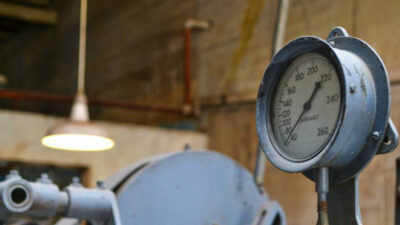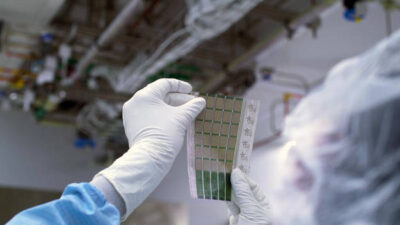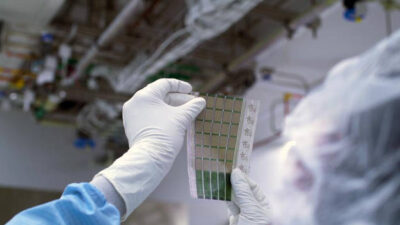Machine builder cools enclosures with a compressed-air system that also creates positive pressure to eliminate airborne contaminants.
Jessup Engineering specializes in engineered-to-order, automated dip processing machines for global finishing operations, including systems designed and built for industries ranging from aircraft, marine, and automotive to plumbing fixtures, appliances, and hardware. Whatever the industry, Jessup’s sophisticated electronic systems must perform in typically harsh, corrosive environments where humidity and airborne contaminants are prevalent. But engineers at the company noticed persistent maintenance and reliability problems related to attempts to cool its enclosures.
According to Jessup Control Systems’ Engineer Chuck Danto, regular refrigerant-based air conditioners were shutting down in as little as 12 months because they were unable to withstand the corrosive environment of the typical surface finishing shop. “With the air conditioner’s not working, then we would have the long-term destructive effects of the heat and humidity, and what it would do to the electronic components,” he says. “There are a lot of PLCs [programmable logic controllers], variable speed drives, and equipment for motion profiling that generate heat. It was always a battle between keeping the enclosure completely sealed to keep the environment out, but taking the trade off of the heat and the long-term effects of what it would do.”
Danto says Jessup solved the problem with a compressed-air based Vortex A/C cooler from Vortec, an ITW Air Management company. In 1961, Vortec developed the technology for converting the vortex tube phenomenon into industrial cooling solutions.
How vortex tube technology works
With no moving parts, a vortex tube spins compressed air into a vortex where hot and cold airstreams are separated at rotational speeds of up to 1 million rpm. The hot air is muffled and exhausted out the back of the unit, while the cold air can become as much as 50 °F colder than the compressed air inlet temperature. The cold air stream passes through an external muffler before being released into the electrical enclosure, where it creates a positive pressure (1-2 psi) to keep external contaminants from entering the cabinet. As cold air loses its refrigeration to cool the electronics, it forces rising hot air out of vent openings. A built-in mechanical thermostat operates a valve to control airflow and cooling to maintain the cabinet within a temperature range of 80-90 °F.
“For us, the simplicity of it is its beauty,” says Danto. “Since it has no real maintenance or service involved, there’s a big cost advantage long term.”
The Vortec system solved Jessup’s heat and environmental issues on all fronts by consistently delivering below-ambient cooling in environments up to 175° F (as opposed to maximum ambient cooling of 131° F for refrigerant-based air conditioners), in addition to creating a positive pressure environment with the optional “purge-air” port on the Vortex A/C. Additional protection is provided by a 5-micron, auto-drain compressed air filter, to ensure that only clean, dry, refrigerated air enters the cabinet.
Danto says the compact size, aesthetic appeal, and ease of installation of the Vortex A/C also were key factors in Jessup’s decision to integrate the non-electric cooling device into its automation systems. The unit’s mounting footprint is less than one-tenth the size of a comparable air conditioner used to cool electrical enclosures, he says, and “we don’t have to size the electrical transformer or the control system power to run an air conditioner—that’s an advantage to us as an OEM.”
Author Information
Dave Kemp is writer for Vortec, Cincinnati, OH.



